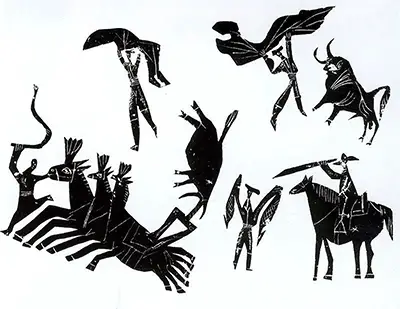Throughout his career, Picasso exhibited his talents as an artist through different mediums; nonetheless, to this date his simplistic sketching and drawings remain as his true exhibition of his genius. Picasso holds a unique minimalist approach of sketching that to this date remains as a signature that cannot and has not been replicated but motivated countless artists globally. An example of his true virtuoso in sketching is depicted in his 1945 ‘Bull fighting scenes’ piece that is a favourite to many around the world.
Pablo Picasso was born in Malaga, Spain; consequently, the Minotaur and Matadors became a major influence of his art. Picasso has a number of bulls as well as bullfighting paintings that are in exhibition today; however, Bull fighting scenes’ of 1945 remains famous because of the use of simplicity in highlighting detail. The piece is made up of three major sketches that highlight the super human nature side of the Minotaur and Matadors in battle.
In the far right bottom, Picasso highlight the battle of man against beats as a horseman engages with a Minotaur. This part of the painting though simple is significantly detailed by using lines as well as shades Picasso highlights on the equestrian’s pursuit on killing the Minotaur. On the far right, Picasso highlights the elegance of a Matador taking on an enraged bull ready to charge.
The maestro Matador holds a muleta over his head awaiting the imminent of a well defined muscular bull. The left side of the painting has a depiction of a matador holding high the spoils of war against a bull that is being dragged away by a chariot of horses. It could be argued that Picassos 1945 bullfighting sense is all based on showing the maestro as well as the valor of the Matadors. He shows how they faced and defeated all forms of bull life forms not only ins style but also in absolute mastery as it has been told and experienced throughout Spain. Through Picasso it is east to see why the Matadors is a symbol of strength in Spanish culture.

